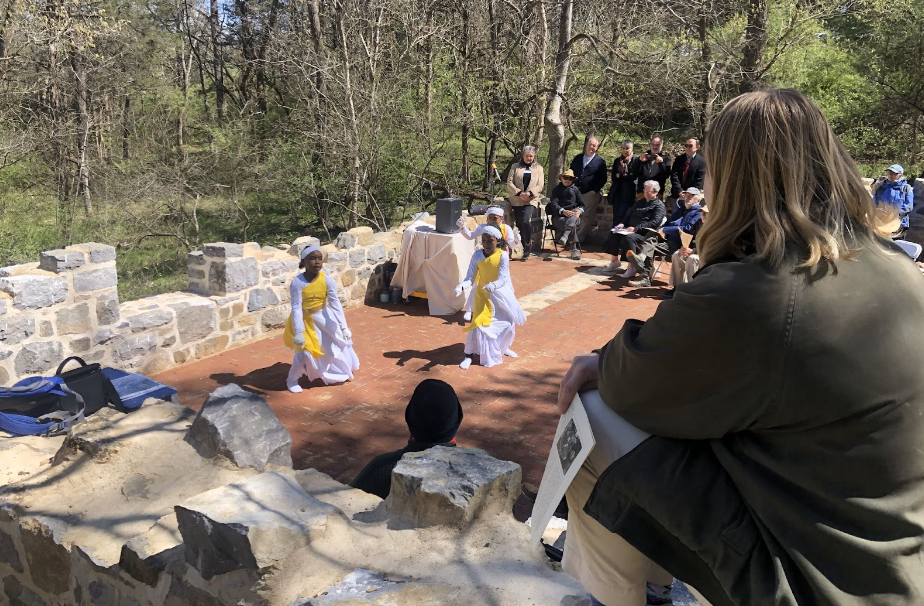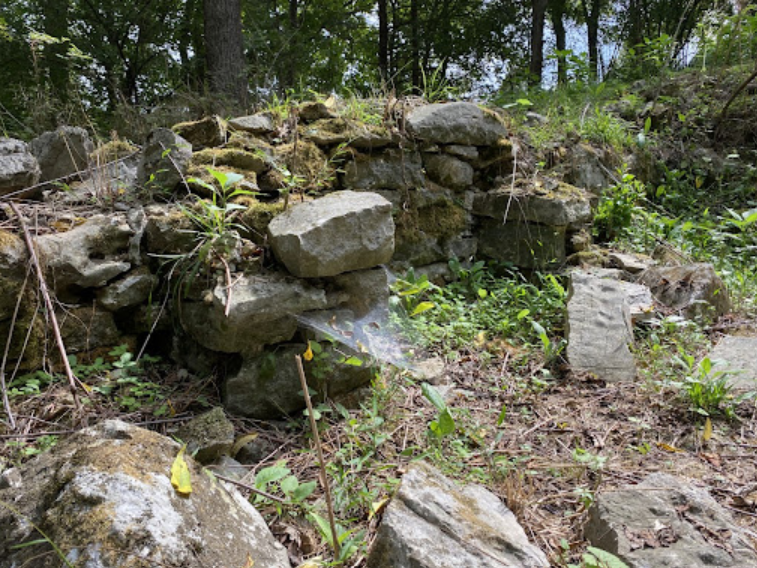Restored W&L Historic Site Commemorated in Ceremony
Restored W&L Historic Site Commemorated in Ceremony
Students, faculty, and local residents gather at “the Foundation” to remember W&L’s history.
(Dancers perform at the April 6 dedication ceremony for The Foundation. Source: The Spectator)
“Our aim today is to respectfully acknowledge the layered history of this landscape,” said anthropology professor Alison Bell at a ceremony marking the restoration of “the Foundation,” the remnants of the old steward’s house on W&L’s back campus. The Saturday, April 6th, 2024 gathering was hosted by members of W&L’s Collective Memory class. (A recording of the event is available here). “The Foundation” lies in the woods behind the ruins of the Liberty Hall Academy Building.
Professor Bell, who graduated fromW&L in 1991, outlined the pre-settlement history of the Rockbridge area, at that time inhabited by the Yesá (Monacan) people. She then described the history of the steward’s house, noting how it was built in 1793, used as a meal hall for students at Liberty Hall Academy. The site became a private slave plantation in 1803 and collapsed in the late 19th century. It was forgotten until university archaeologists excavated it in the 1970s. Left exposed, however, the ruins were gradually overtaken by nature.
“The foundation of this building remained open until 2022, when Washington and Lee's Historic Preservation and Archaeological Conservation Advisory Board recommended that it be restored to the condition in which archaeologists had found it in the ‘70s,” Bell said.
(Stewards House in 2022. Source: The Ring-tum Phi)
“The students and I chose to call this place ‘the Foundation’ as a neutral and hopefully thought-provoking term,” Bell said. “How is it foundational to the university, the local community, the country? How can we understand its past not as ‘either or’, but ‘both and more’? As an outdoor classroom, it offers opportunities across the curriculum.”
She then turned things over to Kelly Fujiwara, the special events coordinator for Lee House as well as a leader of W&L’s Native American and Indigenous Cohort. Fujiwara read a land acknowledgement and “Dancing the Stars,” a poem by the late Karenne Wood, a linguistic anthropologist who spent much of her life involved with the Virginia Indians.
Students also spoke during the event.
“One central question in guiding our class has been what gets remembered, and what is forgotten,” said Adele Roulston, ‘24, an anthropology major enrolled in the Collective Memory class. Roulston emphasized the importance of remembering ‘the Foundation’: “We invite you all to join us in asserting the value of this place and the people who lived and worked here, by gathering with us today and committing ‘the Foundation’ to our collective memory of Washington and Lee,” she said.
After Roulston spoke, P. T. Meadors, ‘24, talked about the Monacan people living in the Rockbridge area before colonization. “This land was valuable because of the nearby spring and temperate climate,” Meadors said, which led to settlements and to the development of communities.
At that point, Don Gaylord, an archaeology professor at W&L, performed Paul McCartney’s “Blackbird” on the guitar.
(Professor Don Gaylord, who is currently leading Spring Term excavations at the Steward’s House, addresses the crowd. Source: W&L Columns)
Abby Kim, ‘26, another student in the Collective Memory class, then summarized the early history of W&L, focusing on the families and individuals who shaped its development. “Washington Lee University traces its history to a series of Presbyterian tutors and schools northeast of Lexington, near Fairfield, and Rockbridge, formerly Augusta County. Our institution identified this inception as 1749, based largely on the will of one James Mcnutt,” she said.
Kim expressed her thoughts on the Foundation and its creation: “though it has a long and complicated history, I hope that us here together can shape it for the better, while recognizing the hardships of the past,” she said.
After Kim’s overview, Natalie Eger, ‘27, spoke on the student life at Liberty Hall. “Looking to our past,” Eger said, “these things that we so appreciate and are so unique to W&L, the degree of honorable behavior and academic excellence that is expected, have deep historical roots way back to the early days of Liberty Hall.”
“The school aimed to serve as a sort of monastery for their education,” Kim explained, “believing that a plain, unadorned style of living was most honorable.”
That outlook was reflected in students’ food. “These students took their meals in the Steward's House,” Kim said, with the steward furnishing “meals three times a day: for breakfast, coffee, tea or chocolate (the drink) with butter and bread; for lunch, one course of bread and meat with suitable sauce and vegetables; for supper, bread and butter with milk.”
Gaylord then summarized the era when the school was moved to its current location and the steward’s house became part of a private plantation. He listed the various owners of the property and the number of African-American slaves they owned.
Nava Berwick, ‘27, then read the names of those enslaved people.
The event was also attended by members of the Lexington community, some of whom gave their thoughts on “the Foundation” after being recognized by Professor Bell. The “esteemed guests” included Pastor Reginald A. Early, president of the Rockbridge NAACP, Eric Wilson, the executive director of the Rockbridge Historical Society, and Margaret Alexander, ‘24, vice president of Students for Historic Preservation. All expressed their support for the restoration of “the Foundation” and their excitement that the site’s history will be made more accessible.
The event ended with a performance of Tash Cobbs Leonard’s “Break Every Chain” by DaHumble Beez, a praise dance team.
After the event, The Spectator spoke with John C. Friedrich and his son, Jesse Friedrich, both of whom managed the restoration of “the Foundation.”
“I couldn’t have asked for more,” John Friedrich said of the event.
Jesse Friedrich concurred. “The event was carefully planned. It went smoothly,” he said.
The Friedrichs revealed that they will now rebuild the spring house which sat behind the steward’s house, including a small kiosk there to explain the structure. They hope to begin this project as soon as next year.
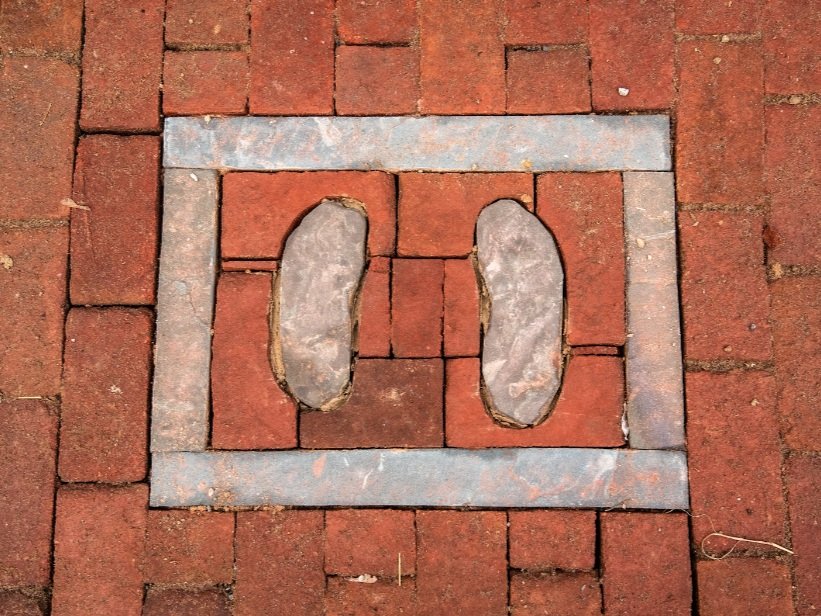
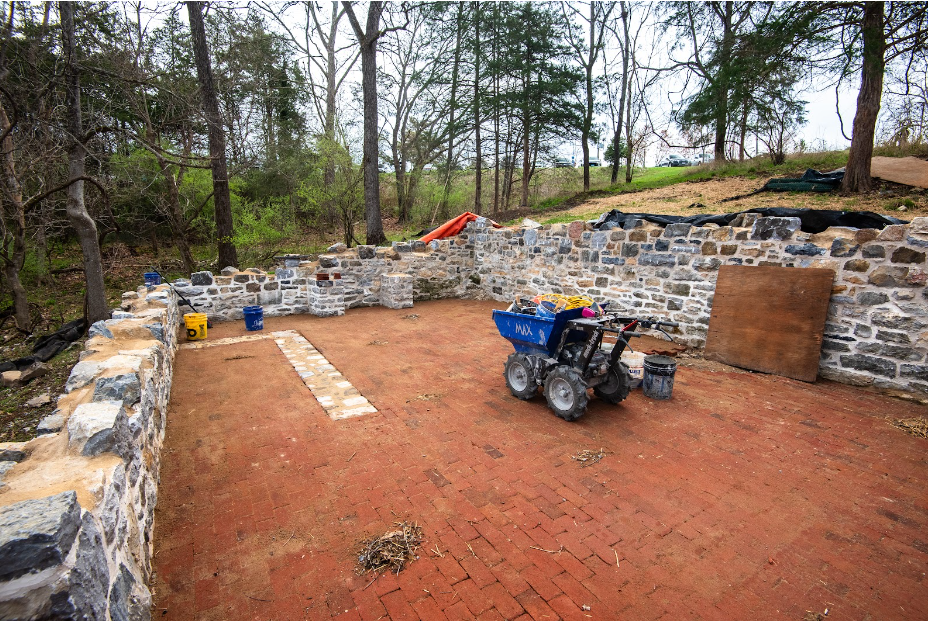
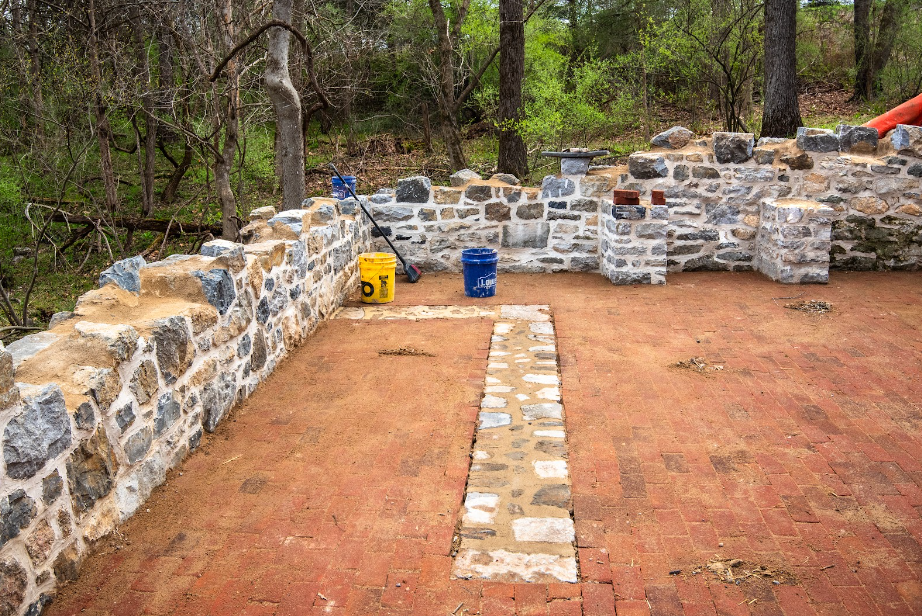
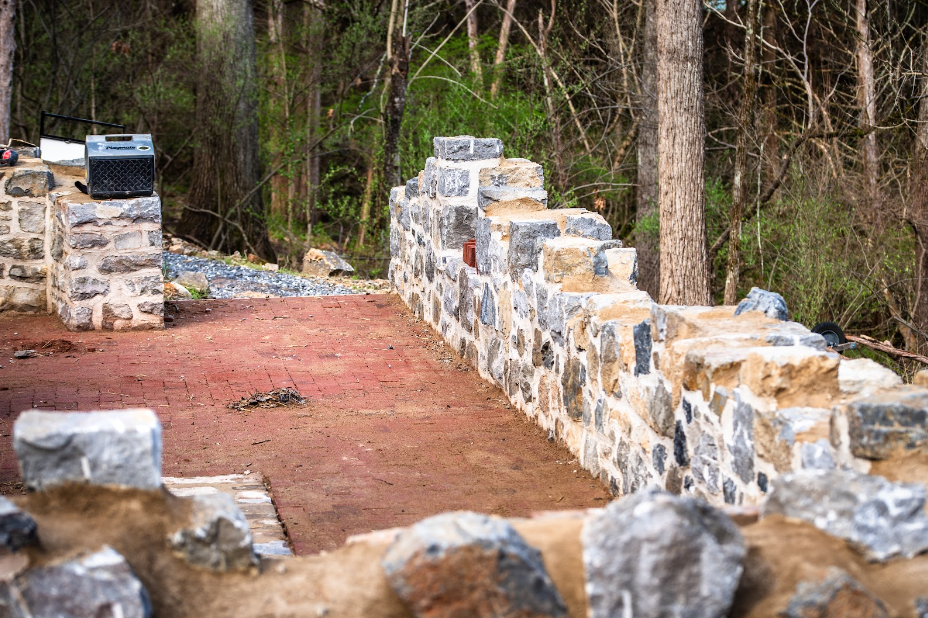
(Several images from the ruins right before construction finished, including a set of footprints representing African-American women who worked in the house. Source: Mark Ozboyd)


